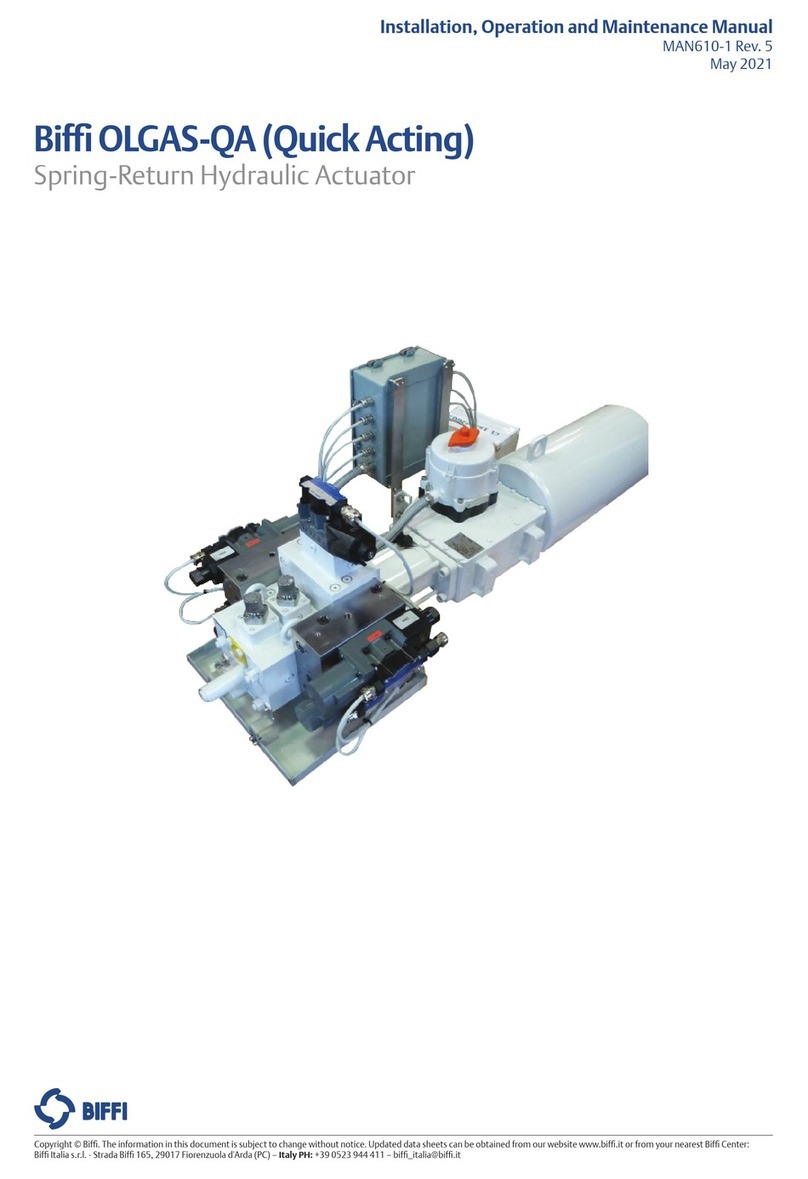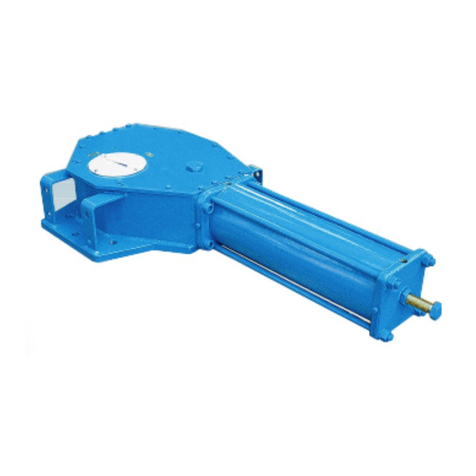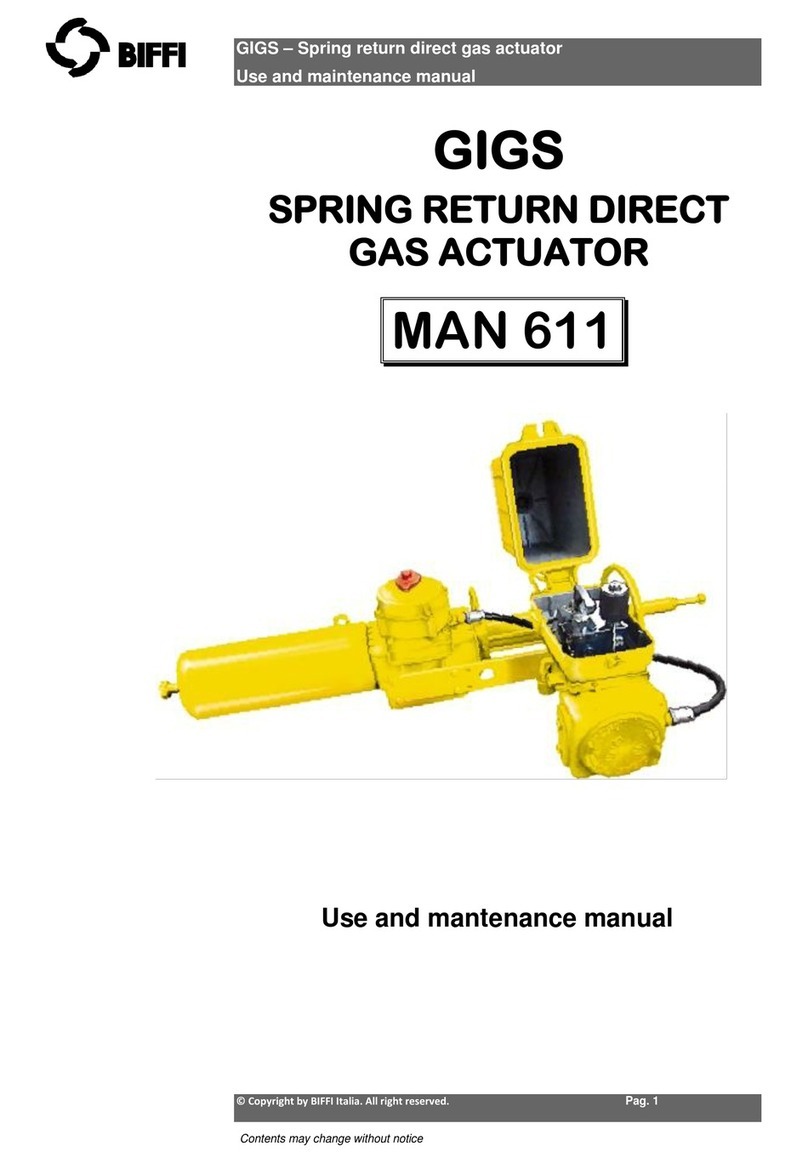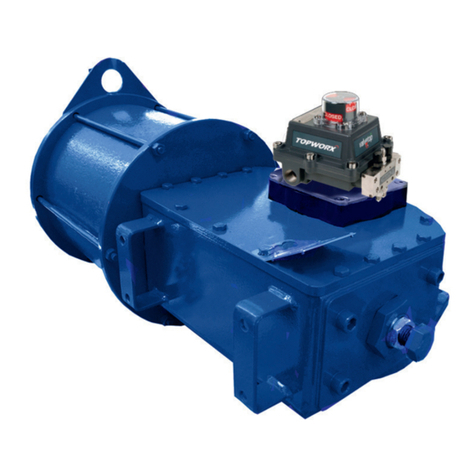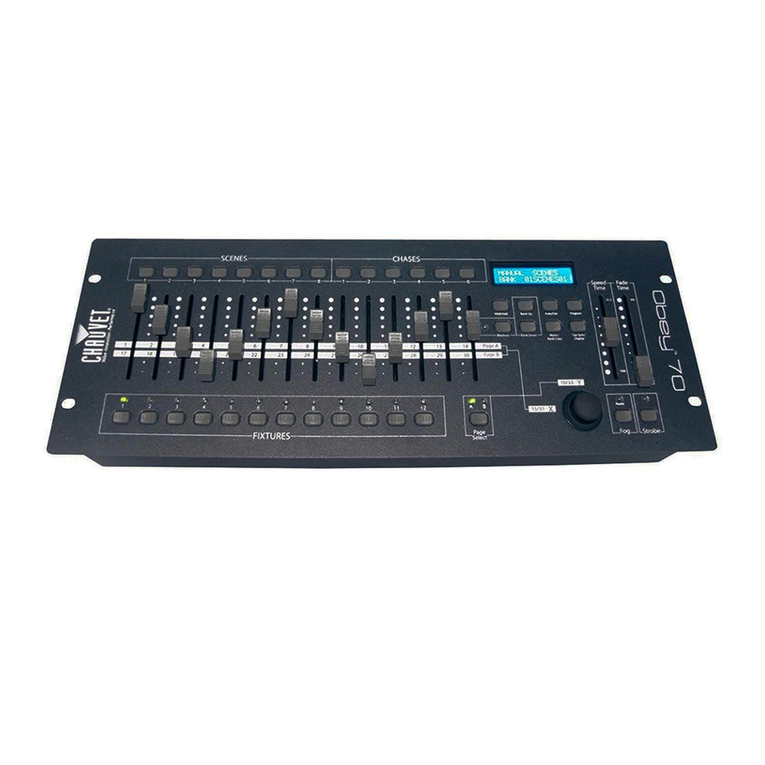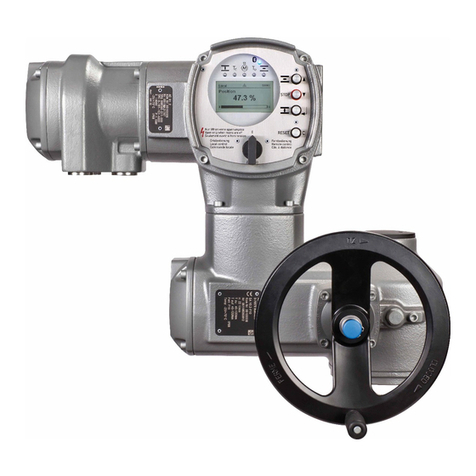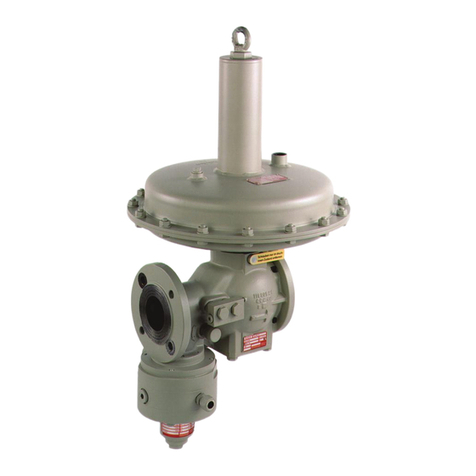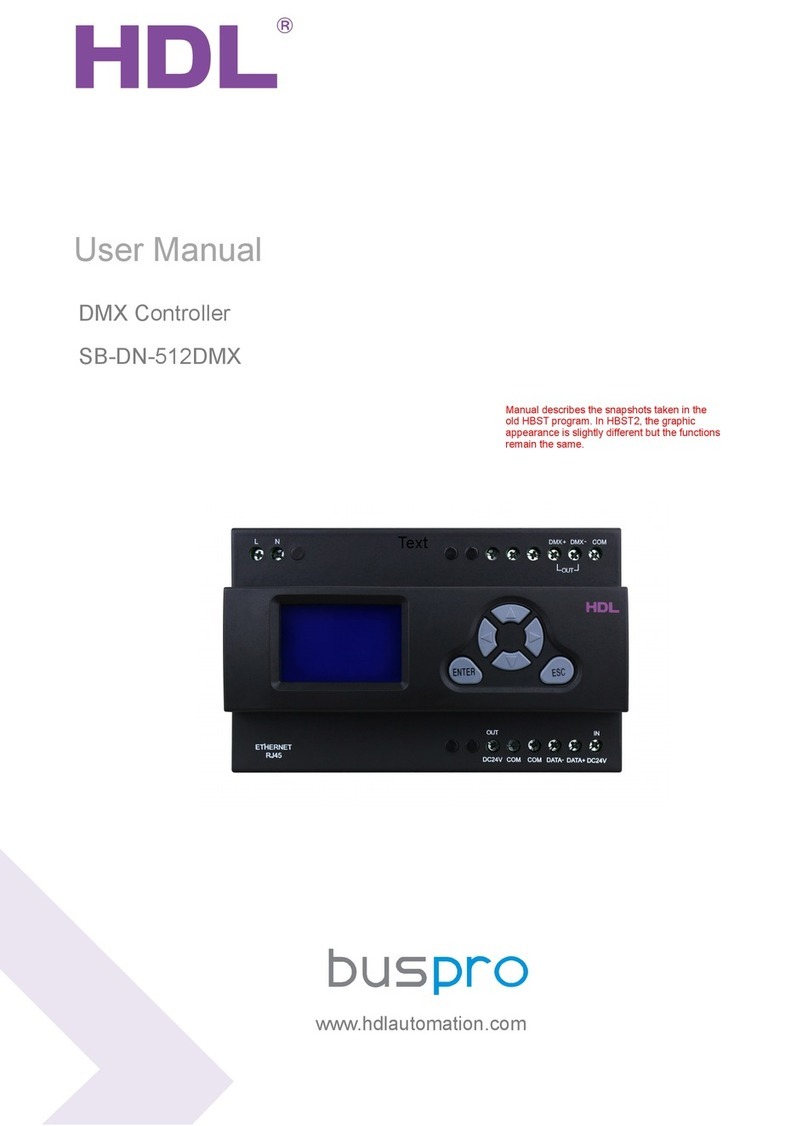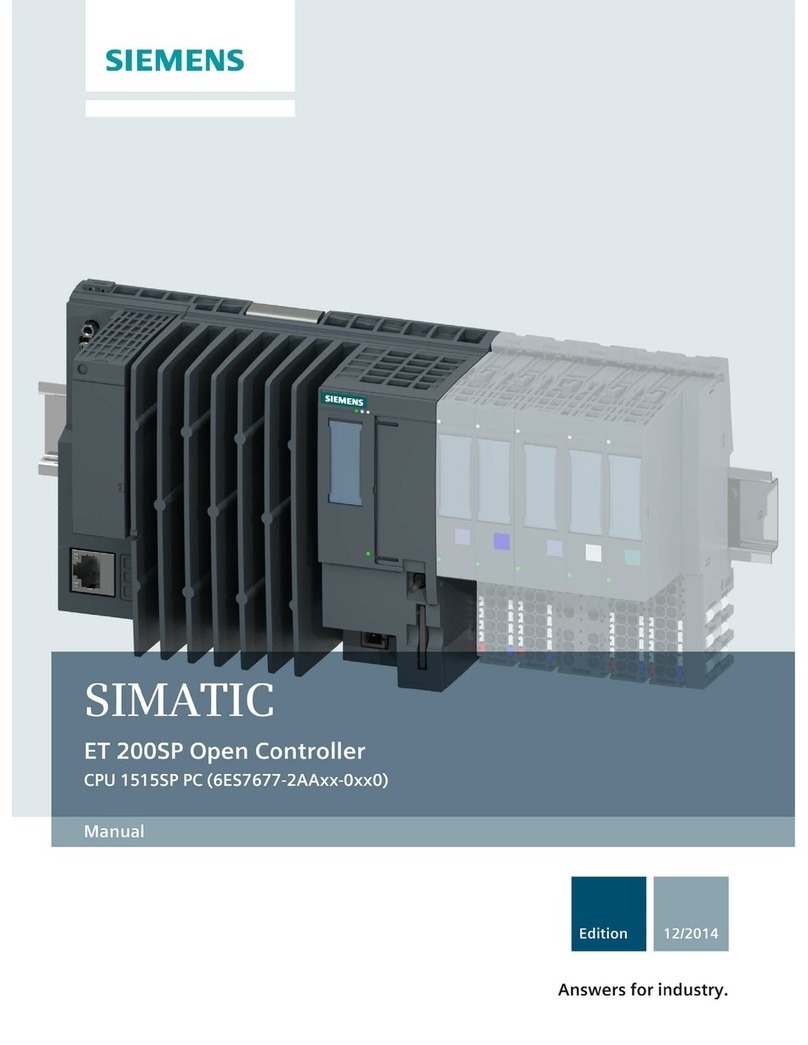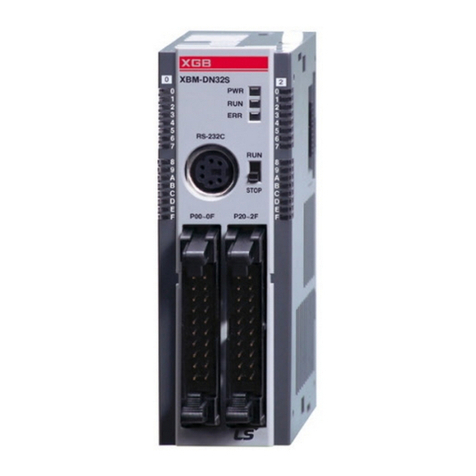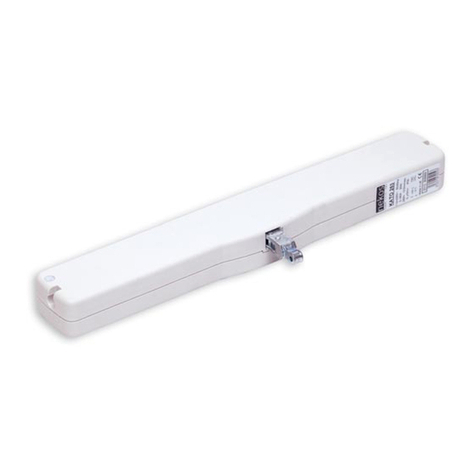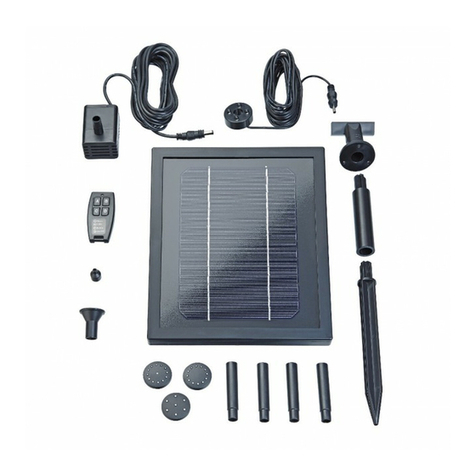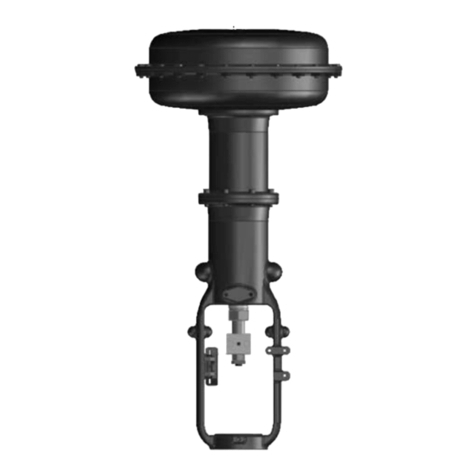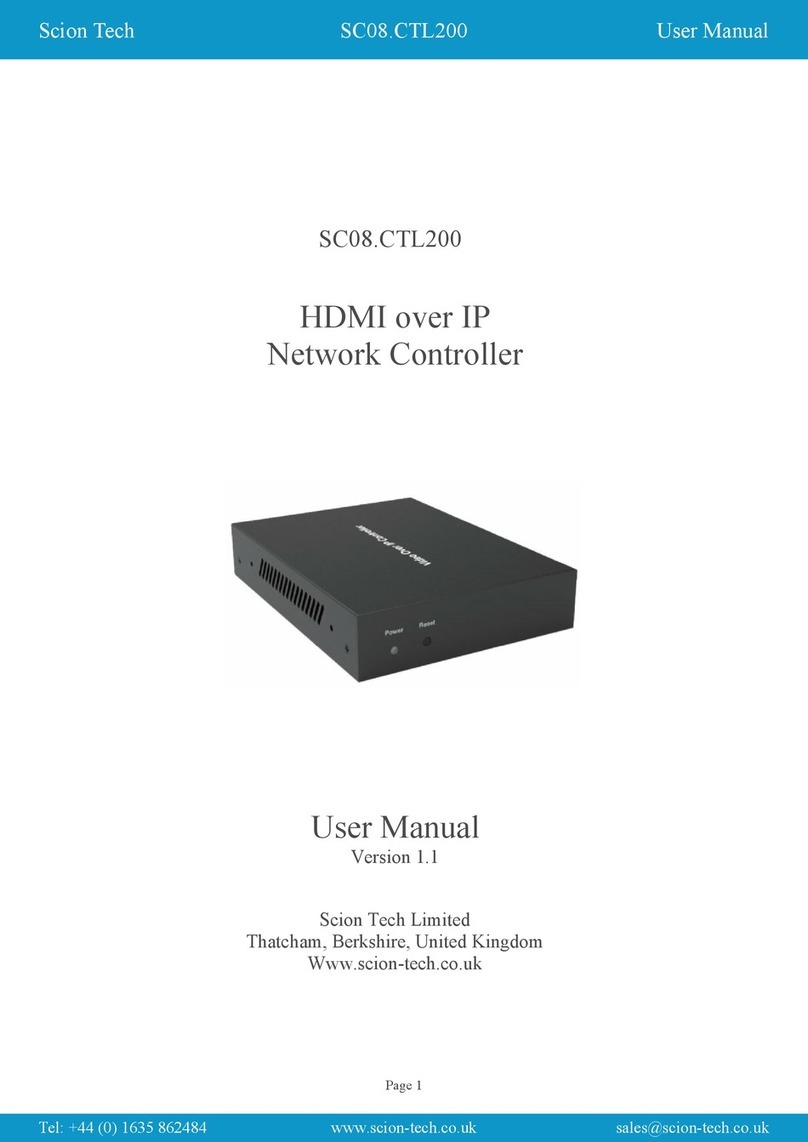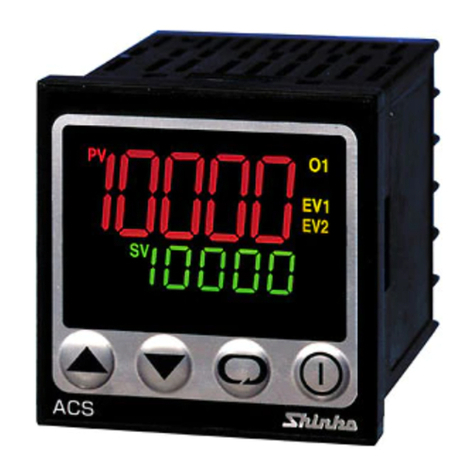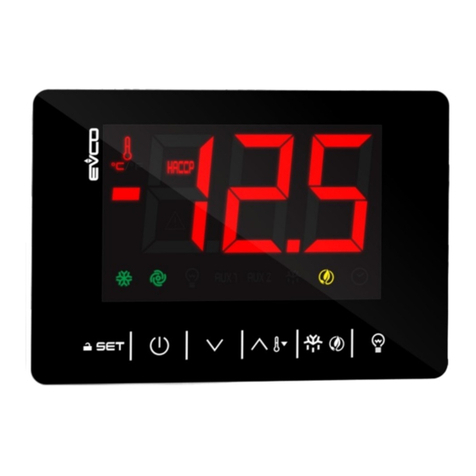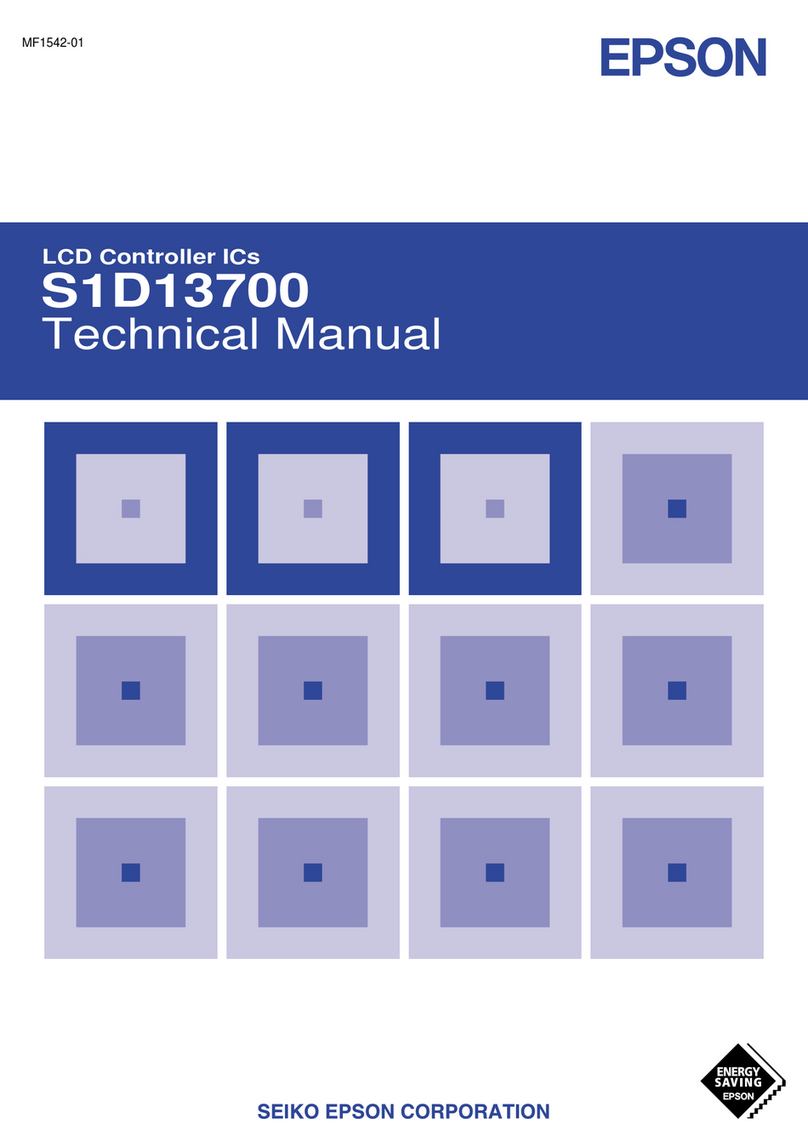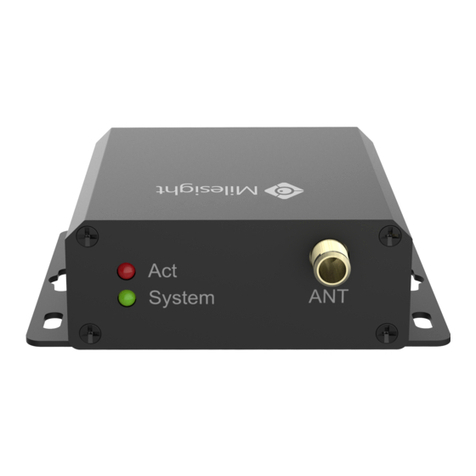BIFFI F01-2000 Parts list manual

BIFFI F01-2000 ELECTRIC ACTUATOR
INSTRUCTION AND OPERATING MANUAL
INDEX
1 General safety instructions������������������� 2
1.1 Range of application ................................. 2
1.2 Safety instructions for installation in
hazardous area ......................................... 2
1.3 Applicable standards and regulations..... 3
1.4 Terms and conditions ............................... 3
1.5 Identification of the main parts ................ 3
2 Storage and pre-installation����������������� 4
2.1 Tests to be carried out when
theactuatoris received ............................ 4
2.2 Storage procedure .................................... 4
2.3 Checks to be performed
beforeinstallation ..................................... 5
3 Installation �������������������������������������������� 5
3.1 Working condition ..................................... 5
3.2 Coupling block: disassembly from
theactuator ............................................... 5
3.3 Manual operation ...................................... 6
3.4 Mounting the actuator onto the valve ...... 7
3.5 Electrical connections .............................. 7
3.6 Removing the electrical enclosures’
covers......................................................... 8
3.7 Cable entries ............................................. 8
3.8 Terminal board.......................................... 9
3.9 Instructions for the explosion-proof
enclosures................................................. 9
3.10 Installation in environment with
explosivedusts........................................ 10
4 Lubrication ������������������������������������������ 10
4.1 Lubrication inspection ............................ 10
5 Operating the F01-2000 ���������������������� 11
5.1 Operation by handwheel......................... 11
5.2 Setting of mehanical stops..................... 11
5.3 Electrical operation................................. 12
5.4 Local control............................................ 12
5.5 Local indication ....................................... 12
5.6 Lock of the 3-position selector .............. 12
5.7 Remote control........................................ 13
5.8
Operating the F01-2000 for thefirsttime..
14
5.9 Optional modules.................................... 14
5.10 Base card of the F01-2000 v4................. 16
GENERAL INSTRUCTIONS FOR INSTALLATION
OPERATION AND CONFIGURATION
MAINTENANCE AND TROUBLESHOOTING
SPARE PARTS AND DRAWINGS
VCIOM-01249-EN 17/12www�biffi�it Copyright © Biffi. All rights reserved.

2
BIFFI F01-2000 ELECTRIC ACTUATOR
INSTRUCTION AND OPERATING MANUAL
6 Local controls�������������������������������������� 17
6.1
Description of the local operator
interface
.................................................. 17
6.2 Configuration options ............................. 20
6.3 Entering the view mode .......................... 21
6.4 Entering the set-up mode ...................... 21
6.5 Exit from view and set-up mode ............ 21
7 Set-up menu���������������������������������������� 23
8 View menu������������������������������������������� 25
9 Set-up routines ����������������������������������� 27
9.1 Actuator set-up ....................................... 27
9.2 Valve data................................................. 35
9.3 Maintenance............................................ 36
9.4 Example of set-up routine...................... 38
10 View routines �������������������������������������� 39
10.1 Actuator set-up ....................................... 39
10.2 Nameplate............................................... 39
10.3 Valve data................................................. 39
10.4 Maintenance............................................ 40
10.5 Example of view routine.......................... 44
11 Maintenance���������������������������������������� 45
11.1 Standard maintenance ........................... 45
11.2 Special maintenance .............................. 45
11.3 Lithium battery change........................... 46
12 Troubleshooting���������������������������������� 47
12.1 The electronics do not switch on
whenpowered ......................................... 47
12.2 DC output voltage not available at
theterminals........................................... 47
12.3 The actuator does not work from
remotecontrols....................................... 47
12.4
The motor is very hot and does
notstart
.................................................. 48
12.5 The motor runs but the actuator
does not move the valve ......................... 48
12.6 The valve does not seat correctly........... 48
12.7 Excessive torque for valve operation ..... 48
12.8 The actuator does not stop in
fully open orfully closed position .......... 48
12.9 The numeric position display
indicates“E01” ........................................ 48
12.10
Diagnostic messages.............................. 49
13 Parts list and drawings ����������������������� 51
13.1 Introduction ............................................. 51
1 GENERAL SAFETY
INSTRUCTIONS
1�1 RANGE OF APPLICATION
F01-2000 electric actuators covered in this
I&O Manual are designed for the operation
of industrial valves used in heavy industrial,
chemical and petrochemical plants.
Biffi will not be liable for any possible damage
resulting from use in other than the designated
applications. Such risk lies entirely with the
user.
The noise emitted by the electric actuator
in normal working conditions is less than
66dB(A) with peak value 115 dB (C)� Standard
reference ISO 11202 (1st ed�, 1995-12-15)�
The electric actuators are designed in
accordance with the applicable international
rules and specifications but the following
regulations must be observed in any case:
- The general installation and safety
regulations
- T
he plant specific regulations and requirements
- The proper use of personal protective devices
(glasses, clothing, gloves)
- The proper use of tools, lifting and transport
equipment
1�2 SAFETY INSTRUCTIONS FOR
INSTALLATION IN HAZARDOUS AREA
WARNING
In case the electric actuator must be installed in a
HAZARDOUS AREA, as defined by the local rules,
it is mandatory to check if the nameplate of the
electric actuator specifies the appropriate degree
of protection. Maintenance and repair works must
be carried out by qualified personnel and checked
by responsible specialists.
Electric actuators F01-2000 have been designed
and manufactured according to ATEX94/9 EC
directive. Different types of protections are
available, depending on the marking printed
on the actuator label: ExdeIIBTxx and
ExtbTxxwith “Explosion proof” terminal board
enclosure, or ExdeIIBTxx and ExtbTxx with
“Increased safety” terminal board enclosure.
They are suitable for use in hazardous area
classified against the risk of explosion due to
the presence of gas and dust.
Actuators have IP68 degree of protection
according to EN 60529.
WARNING
It is assumed that the installation, setting,
commissioning, maintenance and repair works
are carried out by qualified personnel and
checked by responsible specialists.
1�2�1 Marking
IECEx INE XX.ZZZZ IECEx reference certificate
(CoC)
XX ATEX ZZZZ ATEX reference certificate
0080 Notified body for ATEX quality
assurance (INERIS)
II Group II (surface industries)
2Category 2 apparatus
GExplosive atmospheres caused
by gas, mists or vapors
DExplosive atmospheres caused
by gas dusts
IP66/68 Degree of protection

3
BIFFI F01-2000 ELECTRIC ACTUATOR
INSTRUCTION AND OPERATING MANUAL
Hazardous zone Zone Categories according to 94/9/EC Directive
Gas, mists or vapors 01G
Gas, mists or vapors 12G or 1G
Gas, mists or vapors 23G or 2G or 1G
Dust 20 1D
Dust 21 2D or 1D
Dust 22 3D or 2D or 1D
1�3 APPLICABLE STANDARDS AND REGULATIONS
1�4 TERMS AND CONDITIONS
Biffi guarantees each single product to be free
from defects and to conform to current goods
specifications. The warranty period is one year
from the date of installation by the first user,
oreighteen months from the date of shipment
to the first user, whichever occurs first.
No warranty is given for products or
components (such as electric or pneumatic
mechanisms) manufactured by third-party
companies, or for goods which have been
subject to misuse, improper installation,
corrosion, or which have been modified or
repaired by unauthorized personnel. Repair
work due to improper use will be charged at
standard rates.
Coupling block
Gearing case
Terminal box
Local interface
Handwheel
1�5 IDENTIFICATION OF THE MAIN PARTS
EQUIPMENT PROTECTION LEVEL (EPL) EN 60079-14
Explosive atmosphere Zone EPL
Gas 0Ga
Gas 1Ga or Gb
Gas 2Ga or Gb or Gc
Dust 20 Da
Dust 21 Da or Db
Dust 22 Da or Db or Dc
EN ISO 12100-1 Safety of machinery - Basic concepts, general principles for design.
Part 1-Basic terminology, methodology
EN ISO 12100-2 Safety of machinery - Basic concepts, general principles for design.
Part 2-Technical principles and specification
EN 60204-1 Safety of machinery - Electrical equipment of industrial machines
2006/42/EC Machinery Directive
2006/95/EC Low Voltage Directive
2004/108/EC EMC Directive
94/9/EC ATEX Directive

4
BIFFI F01-2000 ELECTRIC ACTUATOR
INSTRUCTION AND OPERATING MANUAL
2 STORAGE AND
PRE-INSTALLATION
2�1 TESTS TO BE CARRIED OUT WHEN
THEACTUATOR IS RECEIVED
If the actuator is received already mounted
on the valve, all operations should have
already been performed during valve/actuator
assembly.
• Check that the display is active.
• Turn the handwheel until the valve is in a
completely open position.
• Check that the display reads 100% indicating
that the valve is completely open.
• Rotate the handwheel clockwise and bring
the valve to a completely closed position.
• Check that the display reads 0% indicating
that the valve is completely closed.
If the test result is satisfactory, the actuator
has already been adjusted and you can proceed
with the electrical connection.
If the actuator is delivered separately from the
valve, or the above procedure shows that the
position is incorrect, all operations described in
this manual must be carried out.
• Check that no damage has occurred during
transport, especially to the push-buttons, the
display area glass and the selector.
• Check the information on the nameplate:
serial number and performance data
(nominal torque, operation speed, protection
class, motor supply voltage, etc.), and verify
the corresponding data on the display
(seechapter 10, View routines).
Make sure all accessories have been received
with the shipment, as described in the delivery
documentation.
2�2 STORAGE PROCEDURE
IMPORTANT
Not performing the following procedures will
invalidate the product guarantee.
2�2�1 General
The actuator leaves the factory in perfect
condition, as guaranteed by an individual
test certificate. In order to maintain these
characteristics until the actuator is installed
on site, proper procedures must be taken for
preservation during the storage period.
Biffi actuators are weatherproof to IP68 for a
submersion at depth of 15 metres for 90 hours.
Thiscondition can only be maintained if the
units are correctly installed/connected on site
and if they have been correctly stored.
The standard plastic plugs used to close the
cable entries are not weatherproof, they just
prevent the entry of undesired objects during
transport.
2�2�2 Storage for a brief period
(less than one year)
2�2�2�1 Indoor storage
• Make sure that the actuators are kept in a dry
place, laid on a wooden pallet and protected
from dust.
2�2�2�2 Outdoor storage
• Make sure that the actuators are protected
from the direct action of weather agents
(protection by a canvas tarp or similar cover).
• Place the actuators on a wooden pallet, or
some other raised platform, so that they are
not in direct contact with the ground.
• If the actuators are supplied with standard
plastic plugs, remove them from the cable
entries and replace them with weatherproof
plugs.
2�2�3 Long period storage
(more than one year)
2�2�3�1 Indoor storage
(In addition to the instructions at
paragraph2.2.2.1)
• If the actuators are supplied with standard
plastic plugs, replace them with weatherproof
plugs.
• In case the actuator is provided with an
lithium battery, remove it and store in dry and
clean place (see paragraph 11.3, Maintenance
- Lithium battery change)
2�2�3�2 Outdoor storage
(In addition to paragraph 2.2.2.2)
• Check the general conditions of the actuator,
paying particular attention to the terminal
board, fuse enclosure and local display glass.
• In case the actuator is provided with an
lithium battery, remove it and store in dry and
clean place (see paragraph 11.3, Maintenance
- Lithium battery change).

5
BIFFI F01-2000 ELECTRIC ACTUATOR
INSTRUCTION AND OPERATING MANUAL
2�3 CHECKS TO BE PERFORMED BEFORE
INSTALLATION
• Make sure the valve to be motorised is the
appropriate one for coupling to the actuator.
• The electrical supply cables must be suitable
for the power rating (see the test certificate
that comes with the actuator).
• Gather the right tools for the assembly and
for setting the actuator controls.
If a long storage period has occurred,
beforereinstalling the actuator, please:
• Check the status of the O-ring seals.
• Check the installation of the plugs or cable
glands on the cable entries.
• Check whether the enclosure covers or the
actuator body are cracked or broken.
• Check the oil level in the actuator and top up
if necessary.
• Put the batteries back into place
(seeparagraph11.3, Maintenance - Lithium
battery change).
3 INSTALLATION
3�1 WORKING CONDITION
The standard actuators are suitable for
thefollowing environment temperatures:
-30°C +85°C (-22°F to +185°F)
Special versions are available for extreme
environment temperatures:
-40°C +70°C (-40°F to +158°F)
-55°C +70°C (-67°F to +158°F)
Note: only for Ex d or Ex d e versions, for
ambient temperature range, see the specific
attached addendum.
IMPORTANT
Check the “temperature environment range”
embossed on the nameplate, for the correct
utilisation with respect to the environment
temperature.
3�2 COUPLING BLOCK:
DISASSEMBLY FROM THE ACTUATOR
The bushing is delivered already assembled to
the drive sleeve, even when it is unmachined.
In order to perform the necessary machining,
remove the bushing from its housing. Remove
the fixing screws from the coupling block.
Actuator view from the coupling side, with the
bushing separated from the gearbox. Do not
lose the seal ring between the coupling block
and the gear reduction unit.

6
3�3 MANUAL OPERATION
To manually operate the actuator it is sufficient
to turn the handwheel in the desired direction.
WARNING
Do not manually operate the actuator with devices
other than the handwheel.
Using cheater bars, wheel wrenches, pipe
wrenches, or other such devices on the actuator
handwheel may cause serious personal injury
and/or damage to the actuator or valve.
BIFFI F01-2000 ELECTRIC ACTUATOR
INSTRUCTION AND OPERATING MANUAL

7
4
1 2 3
11" M32x1.5
21-½" M40x1.5
31" M32x1.5
4* ¾" M25x1.5
F01-2000/150 26
F01-2000/300 26
F01-2000/600 28
F01-2000/150 40
F01-2000/300 40
F01-2000/600 80
BIFFI F01-2000 ELECTRIC ACTUATOR
INSTRUCTION AND OPERATING MANUAL
3�4 MOUNTING THE ACTUATOR ONTO
THEVALVE
Lubricate the valve stem.
Thoroughly clean the coupling surfaces of the
valve and actuator flanges, degreasing them
carefully since torque is transmitted by friction.
Lift the actuator with slings suitable for its
weight.
Size
(DN)
Max� weight
(kg)
WARNING
Never lift the valve/actuator assembly without
securing slings to both the valve and the actuator.
YES NO
Check the dimensions of the valve mounting
details, paying particular attention to the
protrusions of the valve stem in order to avoid
any axial thrusts to the internal parts of the
actuator or the valve when the screws are
tightened.
Place the actuator vertically on the valve stem.
Carry out the coupling operations (if necessary
with the help of manual operation); make sure
no mating parts are forced.
3�4�1 Actuator fixing
Model Tightening torque (Nm)
IMPORTANT
In case the actuator is supplied without stud bolts
and nuts the following materials must be used as
a minimum:
- ISO class 8.8 for studs bolts and nuts
or
- ASTM A 320 Grade L7 (or L7M) for studs bolts
- ASTM A 194 Grade 4 for nuts
3�5 ELECTRICAL CONNECTIONS
Before powering to the actuator check that the
supply voltage details on the nameplate are
correct for the plant. Access to terminals for
electrical connections and commissioning is
through the terminal cover, since all settings
are non-intrusive. The removal of any other
covers without Biffi’s approval will invalidate
the warranty.
Biffi will not accept any responsibility for any
damage or deterioration that may be caused.
IMPORTANT
All the accessories (in particular cable glands)
must be certified according to 94/9/EC Directive).
3�5�1 Identification of entries
Electric actuators series F01 2000 are equipped
with 4 entries (3 are standard the fourth is
supplied when requested).
With reference to the attached picture, the
thread form/size for entry is as follows:
3�5�2 Plants requirements
Protection devices (overcurrent breakers,
magneto-thermal switches or fuses) should
be provided on the plant at Customer care,
to protect the mains line in case of motor
overcurrent or loss of insulation between
phases and earth.
Entry
NPT
size
Metric size ISO 965
(alternative)
* optional

8
BIFFI F01-2000 ELECTRIC ACTUATOR
INSTRUCTION AND OPERATING MANUAL
3�7 CABLE ENTRIES
The sealing of cables and conduit entries
should be carried out in accordance with
National Standards or the Regulatory
Authorities that have certified the actuators.
This is particularly true for units that are
certified for use in hazardous areas where
the method of sealing must be to an approved
standard, and cable glands, reducers, plugs
and adapters must be approved and separately
certified.
Certified cable entries:
- Standard ASA/NPT
(cable entries 2x1”+1x1½”)
- Metric ISO 965
(cable entries 2xM32+1xM40)
Remove the cable entry plugs.
WARNING
Do not damage the mating surface of the cover.
IMPORTANT
In case the screws of the cover must be replaced,
a Stainless Steel AISI 316 must be used with
minimum yield strength of 450N/mm²
IMPORTANT
- To prevent any water infiltration through the
line cable conduits, make sure the cable glands
have the minimum protection degree required
by the plant.
- If rigid conduits are used, we suggest placing
a flexible pipe connection between the conduit
and the terminal board.
3�6 REMOVING THE ELECTRICAL
ENCLOSURES’ COVERS
Using a 8 mm Allen key, loosen the four screws
and remove the cover.
3�6�1 Terminal board enclosure
To guarantee weatherproof and explosionproof
fit, screw the cable glands tightly (at least
5turns) and block them with a thread sealant.
The use of a thread sealant is necessary in case
of explosionproof application.
If some parts of the cable glands have been
removed while working on the cable entries put
them back into place now to avoid losing the
dismantled parts.
Unused entries:
- For explosionproof construction:
unusedentries must be plugged with metal
explosionproof plugs and blocked with a
thread sealant.
- For weatherproof construction:
replace the plastic standard protection plugs
supplied with the actuator with metal plugs.

9
BIFFI F01-2000 ELECTRIC ACTUATOR
INSTRUCTION AND OPERATING MANUAL
Terminate the ground connections to the
ground stud marked One internal
andoneexternal ground studs are provided.
Check the wiring diagram (always enclosed
with the actuator) and the layout displayed
on the back of the terminals enclosure cover,
to ensure a correct electrical connection.
3�9 INSTRUCTIONS FOR THE
EXPLOSIONPROOF ENCLOSURES
IMPORTANT
Electric actuator F01-2000 shall be installed
and maintained according to the applicable
rules regarding the electrical installations in
hazardous area (other than mines) classified
as zone 1 (gas); example: EN 60079-10
(hazardousareaclassification), EN 60079-14
(electrical installation), EN 60079-17
(maintenance), and/or other national standards.
During the dismantling and subsequent
reassembling of the explosionproof enclosures
(covers, cable glands, joints) be careful to bring
these enclosures back to their original condition
3�8 TERMINAL BOARD
Ground studs
IMPORTANT
The removal of any other covers without Biffi’s
approval will invalidate the warranty. Biffi will
not accept any responsibility for any damage or
deterioration that may occur as a result of cover
removal.
Allterminations should be made by insulated
ring or spade connectors using the appropriate
crimping tool. This operation will ensure easy
and correct electrical connection.
Connect the motor supply cable previously
sized in accordance with:
- The absorbed current correspondent to the
actuator nominal torque with the torque
limiting device set at 100 percent (see the test
certificate attached to the actuator).
- The applicable plant and safety norms.
Assemble the power terminals protective
barrier, located in the terminal board
compartment, using the enclosed screws.
The control circuit (controls and signals) must
be connected by means of a multicore cable
to the corresponding numbered terminals
according to the wiring diagram.
The internal cables of the actuator are also
numbered according to the wiring diagram.
Actuators are always delivered with the
motors wound and connected in accordance
to customer requests. Voltage and frequency
values are stated on the motor nameplate.
Connections for Ex e terminals enclosure
The wires must be terminated in accordance
with the following method (see connection table
below):
CONNECTION TABLE
Power cables Control cables
Type of terminal Insulated ring tongue
Eye dimensions (mm) 5.50 3.20
Recommended tightening torques (Nm) 2.0 - 2.8 1.0 - 1.5
Wires section (mm2) 4 2.5
BOLTING TABLE
Model
Motor
cover
Terminal enclosure/
local interface covers Material
F01 M10x35 M10x30 AISI 316/ASME B16.11 A182-F316 (yield strength ≥ 450N/mm2)
to maintain their integrity. In particular, be
sure the joint surfaces of all enclosures are
spread with a film of recommended grease
(seechapter4, Lubrication).
So please:
• Do not damage the explosionproof mating
surfaces on the housing and on the electrical
enclosures covers.
• Reinstall all the screws that go with the
dismantled parts, and block them with a
thread sealant after spreading them with
a film of copper- or molybdenum-based
grease. This will keep screws from sticking
and make maintenance operations easier.
• Check that the bolts and screws are the
same dimension and quality as the original
ones (see bolting table below), or of a
betterquality.

10
1
2
F01-2000/150 0.7
F01-2000/300 0.7
F01-2000/600 0.8
BIFFI F01-2000 ELECTRIC ACTUATOR
INSTRUCTION AND OPERATING MANUAL
4 LUBRICATION
4�1 LUBRICATION INSPECTION
The actuator is lubricated for life, therefore
under normal working conditions it is not
necessary to replace or refill the oil. However
it is recommended to check the oil level every
3-5 years using holes 1 or 2 depending on
mounting position.
The actuator is fitted with oil plugs (parts 1, 2),
so that any assembly on the valve has at least
one oil plug on the upper part of the housing
and one on the lower part.
The actuator is supplied with oil and greased
where necessary.
Actuator size Oil quantity (l)
In case of maintenance the following oils are
recommended:
Ambient temperature from -30°C to +85°C
(-20°C to +60°C only for Ex d e or Ex tb
versions)
• SHELL - TIVELA OIL SC320
Other equivalent:
• EXXON TERESSTIC SHP320
• MOBIL OIL - GLYGOYLE HE 320
• KLUBER LUBRICATION - KLUBERSYNTH
EG4-320
Ambient temperature from -55°C to +70°C
• SHELL - CASSIDA FLUID HF 68
Other equivalent:
• SYNECO - WINTER PLUS
In case of maintenance the following greases
are recommended:
Ambient temperature from -30°C to +85°C
(-20°C to +60°C only for Ex d e or Ex tb
versions)
• ISO viscosity grade X1 (EP1)
Other equivalent:
• ESSO BEACON EP1
• AGIP GR MU/EP1
• AEROSHELL GREASE for explosion-proof
joints in ATEX version
Ambient temperature from -55°C to +70°C
• FUCHS FN20
Other equivalent:
• TEXACO low temperature grease EP
• AGIP FN20/00
3�10 INSTALLATION IN ENVIRONMENT WITH
EXPLOSIVE DUSTS
IMPORTANT
Electric actuator F01-2000 shall be installed and
maintained according to the applicable rules
regarding the electrical installations in hazardous
area (other than mines) classified as zone 21
(dust); example: EN 61241-14 (dust) and/or other
national standards.
Please make sure that:
- The joint surfaces are greased with silicon oil
or equivalent before assembly.
- The cable glands have minimum protection
degree IP68 (EN 60529).
- Periodically verify the quantity of dust
deposited on the enclosure and clean it if
more than 5mm.
• Replace the weatherproof seals that may
have been removed (O-ring for the covers,
O-ring for the explosionproof joint of the
motor).
When the Ex d e version is supplied, according
to the protection degree shown on the
nameplate, waterproof cable glands with a
minimum IP68 protection degree, can be used.
WARNING
Do not operate the actuator electrically when the
electrical enclosures are removed. Operating the
unit with the electrical enclosures removed could
cause personal injury.

11
L min.
L max
F01-2000/150 24 16
F01-2000/300 24 16
F01-2000/600 29 18
BIFFI F01-2000 ELECTRIC ACTUATOR
INSTRUCTION AND OPERATING MANUAL
5 OPERATING THE F01-2000
5�1 OPERATION BY HANDWHEEL
To manually operate the actuator it is sufficient
to turn the handwheel in the desired direction.
The manual operation is always possible
without any clutching mechanism.
5�2 SETTING OF MECHANICAL STOPS
Necessary equipment: a 3 mm hexagonal key.
According to the type of valve to be operated,
the actuator can be stopped by means of torque
or position limit switches, as detailed in the
following list:
Valve type: metal seated butterfly valve
Closing: torque
Closing: position
Valve type: ball valve, butterfly valve, plug valve
Opening: position
Opening: position
Before any setting operation, it is necessary to unscrew the adjustable mechanical stops.
Hold the lock nut and remove the mechanical stop protection by unscrewing it.
Remove the seal washer.
Hold the mechanical stop by means of a suitable Allen key and in the same time loosen the lock
nut by one turn.
Screw the closing or opening mechanical stop until it reaches the end stroke.
From here unscrew it by half a turn and lock it with the lock nut.
Check the protrusion of the mechanical stop:
for a stroke of 90° ± 5°, length “L” should be within the following values:
Size L max� (mm) L min� (mm)
WARNING
Do not manually operate the actuator with devices
other than the handwheel. Using cheater bars,
wheel wrenches, pipe wrenches, or other such
devices on the actuator handwheel may cause
serious personal injury and/or damage to the
actuator or valve.

12
BIFFI F01-2000 ELECTRIC ACTUATOR
INSTRUCTION AND OPERATING MANUAL
5�3 ELECTRICAL OPERATION
Before connecting power to the actuator check
that the voltage is correct and according to the
indications on the nameplate. Wrong power
supply could cause a permanent damage to the
electrical components. Check of phase rotation
is not necessary since the unit is provided with
automatic phase rotation correction. Place
the 3-position selector in OFF and then switch
on the power. Do not operate the actuator
without first checking that the configuration is
according to the required application. Usingthe
“VIEW and SET-UP” features can do this
(seeparagraph 6.4, Local controls - Entering
the set-up mode).
5�4 LOCAL CONTROL
After configuring the actuator, if no alarm is
present, place the 3-position selector in LOCAL
and control the actuator by OPEN, CLOSE and
STOP push-buttons.
If “push-to-run” was selected the actuator can
be driven to the desired position by pressing
and holding the OPEN/YES or CLOSE push-
button. As the push-button is released, the
motor is de-energized.
If “latched” was selected, as the OPEN or
CLOSE push-button is pressed the motor is
energized, and it runs on after the control
is released. To stop the motor, press the
STOP push-button. Toreverse the direction,
press the STOP push-button and then press the
push-button relevant to the opposite direction.
In “latched with instant reverse” mode, the
local controls work as in the “latched” mode,
but to reverse the motor direction you only
need to press the push-button relevant to the
opposite direction.
5�5 LOCAL INDICATION
The upper display (3½ LCD) indicates the
valve position as a percentage of opening
(open=100%).
The lower display has two alphanumeric lines.
The upper line indicates the actuator status and
the 3-position selector status. The lower line
indicates the actuator operation.
Two LED’s indicate the actuator position /
operation, while a third LED indicates alarms.
5�6 LOCK OF THE 3-POSITION SELECTOR
The 3-position selector can be locked in any of
its three positions by means of a padlock.
OPEN/YES
STOP
CLOSE/NO
Status Operation
or Position
request R%
Local selector
position

13
BIFFI F01-2000 ELECTRIC ACTUATOR
INSTRUCTION AND OPERATING MANUAL
5�7�1 Remote commands
Using the “VIEW and SET-UP” features may
configure different control modes.
4 WIRES (see the remote connections diagram)
In “4 wires latched” (OPEN, CLOSE, STOP,
COMMON) mode, with the OPEN or CLOSE
signal switched to ON, the motor is energized,
and it runs on after the signal returns to OFF.
To stop the motor, press STOP. To reverse
the direction, press STOP and then press the
button relevant to the opposite direction.
OPTION A1)
OPTION B1)
3 WIRES (see the remote connections diagram)
With option “3 wires” (OPEN, CLOSE, COMMON),
the actuator can be driven in either “push-to-
run” or “latched with instant reverse” mode.
In “ push-to-run ” mode, the actuator can be
driven to the desired position by switching the
OPEN or CLOSE signal to ON. As the signal
returns to OFF, the motor is de-energized.
In “latched with instant reverse” mode, when
the OPEN or CLOSE signal switches to ON,
the motor is energized, and it runs on after the
signal returns to OFF. If the signal relevant to
the opposite direction goes ON, the actuator
reverses its direction and maintains the new
direction also if the signal returns to OFF.
The circuits associated to the inputs can be
supplied by the internally-generated 24 V DC
or by an external 20-125 V DC or 20-120 V AC
(50/60 Hz).
The signal levels are the following:
- Minimum ON signal > 20 V DC or 20 V AC
(50/60 Hz)
- Maximum ON signal < 125 V DC or 120 V AC
(50/60 Hz)
- Maximum OFF signal < 3 V DC or V AC
5�7�2 Output contacts
- Monitor relay: on the terminal board, the
voltage-free, change-over contacts of the
monitor relay are available. The monitor relay
indicates that the actuator can be remotely
controlled or that there is a problem or
condition which prevents remote control of
the valve. The conditions that cause the relay
to switch over are listed in paragraph 9.1.6,
Output relays.
- AS1,2,3,4 relays: on the terminal board, the
voltage-free contacts of 4 latching relays are
available. The status (make or break) and the
conditions that cause the switching of the
relay can be viewed and configured by using
the “VIEW and SET-UP” features. The status
of the latching relays is immediately updated
as the associated conditions for change
occur. Moreover, the status of the above
contacts is cyclically updated (every 500 ms)
- Contact rating:
Max. voltage 250 V AC/30 V DC
max. current 5 A;
Min. voltage 5 V DC;
min. current 5 mA
2 WIRES (see the remote connections diagram)
With the “2 wires” option 2 different activities
may be selected:
In “2 wires, signal ON to open”, the actuator
opens if the signal switches to ON and closes
if the signal goes to OFF. In “2 wires, signal
ON to close”, the actuator closes if the signal
switches to ON and opens if the signal switches
to OFF.
OPTION A2)
OPTION B2)
OPTION A3)
OPTION B3)
5�7 REMOTE CONTROL
Place the 3-position selector in REMOTE to
transfer the actuator control to a remote
device. LocalOPEN or CLOSE operation will
be inhibited. Only local STOP control remains
active.
Using the “VIEW and SET-UP” features may
configure different control modes. The remote
controls are opto-coupled.
A non-regulated 24 V DC voltage (variable from
23 to 27 V DC, max. 4 W) is available on the
actuator terminal board to supply the remote
controls or external devices.
- Minimum signal duration > 300 ms.
- Total current drawn from remote controls
< 25 mA
5�7�3 ESD operation
An ESD (Emergency Shut Down) signal
can be sent to the actuator to override any
existing command and to drive the valve to a
predetermined position.
The control is not self-maintained, that is, the
ESD action continues until the relevant signal is
present. The “VIEW and SET-UP” features can
configure different ESD options.
The ESD command is opto-coupled.
Thecircuits associated to the input can be
supplied by the internally generated 24 V DC
or by an external 20-125 V DC or 20-120 V AC
(50/60 Hz).
The signal levels are the following:
- Minimum ON signal > 20 V DC or 20 V AC
(50/60 Hz)
- Maximum ON signal < 125 V DC or 120 V AC
(50/60 Hz)
- Maximum OFF signal < 3 V DC or V AC
- Current drawn from ESD controls < 15 mA
WARNING
If customers wish the motor thermostat to be
by-passed during ESD operation any certification
for actuator enclosure in hazardous area would be
invalidated.

14
BIFFI F01-2000 ELECTRIC ACTUATOR
INSTRUCTION AND OPERATING MANUAL
5�8 OPERATING THE F01-2000 FOR THE
FIRSTTIME
Before attempting to operate the F01-2000
for the first time, check that the actuator is
correctly mounted on the valve. Place the
3-position selector in OFF and switch the
power on. The alphanumeric display shows the
following message for about 3 seconds:
5�9 OPTIONAL MODULES
Additional modules can be plugged in the base
card of the F01-2000 to provide the following
functions:
5�9�1 Fieldbus interface for remote control via
FIELDBUS
This card allows to connect the F01-2000 to
FIELDBUS.
The following bus interface cards are available:
- Profibus DPVO
- Profibus DPV1 with or without redundancy
- Foundation Fieldbus
- LonWorks
- Modbus RTU
A Hardware alarm is generated if the F01-2000
was set to be equipped with bus card, but the
card is damaged or missing. A BUS REPORT
is also present in the list of reports if the card
is present (see chapter 6). See the specific
manuals for instructions and the setting of the
above modules.
Then the new message should be:
according to the configuration present in the
memory.
If the upper line of the display shows
“ALARM OFF”, remove the alarm before
going ahead (see paragraph 12.10).
If the upper line of the display shows
“WARNING OFF”, a warning condition
is present. You can go ahead since the
F01-2000 is working well, but some datum is
not according to the configured parameters
(seeparagraph 12.10).
If the following message appears, the base
card is F01-2000 v4 type, but the actuator is
equipped with an F01-2000 v0 series terminal
board. This may happen if the F01-2000 v4 base
card was supplied as a spare card, to replace
the base card of the F01-2000 v0 series (see
the previous revision of instruction manuals
relevant to the F01-2000 and its optional
modules).
5�9�2 Ain/Aout card
With the above card the F01-2000 is provided
with a 4-20 mA analog input and a 4-20 mA
analog output. This card should be plugged
on the base card, replacing the “TERMINAL
BOARD ADAPTOR” card supplied as standard.
A Hardware alarm is generated if the F01-2000
or
Biffi Italia
F01-2000 v4 ntb
NORMAL OFF
STOP
NORMAL OFF
R%: xxx�x
Biffi Italia
F01-2000 v4 otb
Do not operate the actuator without first
checking that the configuration is according to
the required application by using the “VIEW and
SET-UP” features (see chapter 6/10).
Set torque limits, position limits and close
direction by means of the “stroke limits
routine” of the “actuator set-up” menu
(see chapter 9).
When the stroke limits and the configurations
are correct, bring the 3-position selector to
LOCAL and drive the actuator to open or closed
position (see paragraph 5.4).
If the upper line of the display shows
“INT OFF”, an Interlock input is active.
If the upper line of the display shows
“ESD ON OFF”, the ESD input is active.
was set to be equipped with an Ain/Aout
card, and the card is damaged or missing.
An Ain/Aout REPORT is also present in the list
of reports if the card is present (see chapter 6).
5�7�4 Interlock inputs
Two additional inputs are available to inhibit
actuator movement in open or close direction.
The controls are momentary, and the inhibit
action continues until the relevant signal
is present. The interlock controls work
when the local selector is in either LOCAL
or REMOTE positions. The ESD control
overrides the interlock controls. The “VIEW
and SET-UP” features can configure the
polarity of INTERLOCK signal as described in
paragraph9.1.10, Interlock.
The interlock inputs are opto-coupled and can
be supplied by the internally generated 24 V DC
or by an external 20-125 V DC or 20-120 V AC
(50/60 Hz).
The signal levels are the following:
- Minimum ON signal > 20 V DC or 20 V AC
(50/60 Hz).
- Maximum ON signal < 125 V DC or 120 V AC
(50/60 Hz).
- Maximum OFF signal < 3 V.
- Total current drawn from remote controls
< 20 mA.
OPTION D1)
OPTION D2)
OPTION E1)
OPTION E2)

15
B6
B7
B7
C10
B9
B8
BIFFI F01-2000 ELECTRIC ACTUATOR
INSTRUCTION AND OPERATING MANUAL
• 4-20 mA analog output
The 4-20 mA output can be configured to
provide a signal proportional to either “position”
or “torque”. The polarity option allows to
reverse the relationship between the position
or torque and the 4-20 mA output signal. See
“VIEW and SET-UP” features (paragraph 9.1.9,
OUT 4-20 mA).
The 4-20 mA output is opto-coupled. It should
be powered by a 20-30 V DC voltage (externally
or internally generated) and the maximum load,
including the cable resistance, should be less
than 300 ohm.
Figure A shows the wiring diagram.
Actuator terminals ACTIVE LOOP
Cable
GROUND
Shield
20-30
V DC
External power supply
LOAD: max 300 ohm
Internal power supply
Cable
GROUND
Shield
LOAD: max 300 ohm
The behaviour in case of loss of main
voltage is different if the power supply of the
4-20 mA output stage is internally or externally
generated:
- Internal power supply (or passive loop):
In case of loss of main voltage the output
4-20 mA drops to 0. The correct output will be
restored when the main voltage returns.
- External power supply (or active loop):
If the actuator is provided with an lithium
battery (or supplied by the auxiliary 24 V DC)
and if the main voltage fails, the output
4-20 mA maintains the last value. If the
actuator is moved by handwheel, the output
4-20 mA will be updated.
If the actuator is not provided with an lithium
battery (or not supplied by the auxiliary
24 V DC) and if the main voltage fails, the
output 4-20 mA maintains the last value.
If the actuator is moved by handwheel, the
output 4-20 mA will not be updated.
• 4-20 mA analog input
The 4-20 mA analog input is the position
request R% signal and is used by the F01-2000
to position the valve in inching and modulating
actuators. The “POSITIONER” routine
processes the input signal, compares the
present actuator position % with the position
request R% and if the difference is greater than
the dead band, the actuator is driven to reach
the requested position. 4 mA corresponds to
request R% = 0% = valve closed and 20 mA
corresponds to request R%=100% = valve
open. The relationship between position
and request signals can be reversed by the
“Polarity” function. The 4-20 mA input is
opto-coupled. The input impedance is less than
500 ohm. The loss of the 4-20 mA input signal
is indicated as follows:
- Change-over of the monitor relay
- Alarm LED on
- List of ALARMS (see paragraph 12.10,
Diagnostic messages)
- Alarm log
Figure B shows the wiring diagram.
Actuator terminals
Cable
0 V DC
4-20 mA
GROUND Shield
4-20 mA
generator
PASSIVE LOOP
4-20 mA
0 V
4-20 mA
FIGURE A
FIGURE B
The “VIEW and SET-UP” features can configure
different options which are described in
paragraph 9.1.7, Positioner.
If the POSITIONER function is active the
alpha-numeric display indicates the value of the
position request in % (R%: xxx.x).
NORMAL REMOTE
R:47% NEXT?
0 V
V+
0 V

16
BIFFI F01-2000 ELECTRIC ACTUATOR
INSTRUCTION AND OPERATING MANUAL
Ain/Aout card
This optional card is used in place of the
Terminal Board Adaptor (TBA) card when
an analog 4-20 mA input and output signal
is requested. This card cannot be used in
the actuators with terminal board series
F01-2000 v0 (see paragraph 5.8, Operating the
F01-2000 for the first time).
5�10 BASE CARD OF THE F01-2000 V4
Bottom view of base card
Terminal Board
Adaptor card (TBA)
Fieldbus interface card
The type of card depends on the fieldbus
present in the plant.
Base card equipped with fieldbus interface card
and Terminal Board Adaptor card.
Top view of base card
Bluetooth™
Potentiometer card
this card allows the base card to read position
and torque values from the potentiometers
installed on the actuator

17
4
6
1
3
2
5
BIFFI F01-2000 ELECTRIC ACTUATOR
INSTRUCTION AND OPERATING MANUAL
6 LOCAL CONTROLS
Numeric display to indicate the present
valve position as a % of the opening.
Display resolution in function of the actuator
stroke turns:
- From 2.8 to 5.5 turns = 1%
- From 5.5 to 13.8 turns = 0.5%
- From 13.8 to 27.7 turns = 0.2%
- From 27.7 to 10,000 turns = 0.1%
3-position selector to set the following
operation modes:
- LOCAL: for local control only
- OFF: no control is active but the actuator is
still connected to the mains
- REMOTE: for remote control only
Alphanumeric display: during normal
operation the alphanumeric display shows the
present status (NORMAL, ESD ON, ALARM,
WARNING, INTERLOCK), the 3-position
selector status (LOCAL, OFF, REMOTE) and the
actuator action (OPEN, OPENING, CLOSED,
CLOSING, STOP or
R% : xxx.x). If the local selector is in OFF or
REMOTE, pressing the YES push-button it is
possible to scroll the list of variables, alarms
and reports:
CLOSE/NO
STOP
OPEN/YES
The F01-2000 can be provided with a
radiofrequency wireless connection based on
a qualified Bluetooth™ class 1 module. This
allows to establish a connection and exchange
data with a PDA or PC with built-in Bluetooth™
technology. The following tasks can be
wirelessly performed:
- View and change configuration
- Set maintenance function
- Read maintenance data
- Download new firmware to the F01-2000
- The blue LED indicates that the
communication with a host device is
established
Local controls: OPEN/YES, CLOSE/NO,
and STOP push-buttons.
The STOP push-button resets any existing
command and is active both in local and
remote.
If the 3-position selector is in LOCAL, the
OPEN / YES, and CLOSE /NO push-buttons
work as OPEN and CLOSE commands.
If the 3-position selector is in REMOTE or
in OFF, the OPEN / YES and CLOSE / NO
push-buttons work as YES and NO to answer
the prompt (next? OK? view?, change? exit?) of
the alphanumeric display.
In OFF, the OPEN / YES and CLOSE / NO
push-buttons allow to scroll down the menu,
to view and change the actuator configuration
or to scroll the list of variables, status, and
alarms.
In REMOTE, the above push-buttons allow
scrolling the list of variables, status, alarms
and reports but the actuator configuration
cannot be viewed or changed.
6�1 DESCRIPTION OF THE LOCAL OPERATOR
INTERFACE
The following functions are available by the
F01-2000 local operator interface:
- actuator control
- actuator configuration
- actuator status visualisation
The figures on the following pages describe
the function of each component of the local
operator interface.
1
3
2
4
5
6
output torque mot temp
motor speed term temp
main voltage log status
current wireless report
temperature node report *
time FDI report *
date base report
alarm term report
warning Ain/Aout report *
Ktemp
The data with * are only present if the relevant
modules are present.
Three LED’s to indicate the actuator
status according to the following logic:
- green ON/ red OFF: the actuator is stopped in
open position
- green OFF/ red ON: the actuator is stopped in
closed position
- green OFF/ red flashing: the actuator is
running in closing direction
- green flashing/ red OFF: the actuator is
running in opening direction
- green ON/ red ON: the actuator is stopped in
intermediate position
- yellow ON: alarm
- yellow flashing: warning
The above color combination is supplied as
standard, but it may be changed (red with
green, green with red, and yellow with red),
during actuator setting operations.

18
BIFFI F01-2000 ELECTRIC ACTUATOR
INSTRUCTION AND OPERATING MANUAL
The warning condition occurs when a variable
reaches a critical value and/or a maintenance
action is required, but the actuator control
functions are still available. The alarm
condition occurs when a variable is out of the
acceptable range and the actuator control
functions are not available.
The alarm and warning lists only contain
the present alarms and warnings. When the
fault condition disappears, the corresponding
alarm or warning disappears from the list.
A reset routine is provided to clear the
type of alarm/warning that are memorized
(over-torque, jammed valve,etc.).
DESCRIPTION OF VARIABLES AND REPORTS
torque output torque in % of the nominal torque stated in the NAMEPLATE menu
motor speed RPM of electrical motor
main voltage voltage (V) and frequency (Hz) of mains
current current (A) absorbed by the motor
temperature temperature (°C), inside the electronic compartment
time present time
date present date
alarm list of present alarms (see paragraph 12.10, Diagnostic messages)
warning list of present warnings (see paragraph 12.10, Diagnostic messages)
Ktemp temperature factor
mot temp temperature (°C) of the electrical motor
term temp temperature (°C) inside the terminal board compartment
log status data logger status (off, ready, in progress: E: event number - n° of memory cycle
or R: sample number - n° of memory cycle)
wireless report Bluetooth™ interface status (ready, not ready)
node report report of bus interface card (only present if the bus card is present)
(see the relevant instruction manual)
FDI report report of FDI function (only present if the LonWorks bus card is present)
(see the relevant instruction manual)
base report base card report
- card code
- manufacturing week and year
- electrical diagram, etc.
term report terminal board card report
- card code
- manufacturing week and year
- electrical diagram, etc.
Ain/Aout report Ain/Aout card report (only present if the card is present)
- card code
- manufacturing week and year
- electrical diagram, etc.

19
BIFFI F01-2000 ELECTRIC ACTUATOR
INSTRUCTION AND OPERATING MANUAL
The following drawing shows the use of the OPEN / YES, CLOSE / NO and
STOP push-buttons in function of the local selector position.
LOCAL OFF REMOTE
3-POSITION SELECTOR
= OPEN/YES push-button
= CLOSE/NO push-button
= STOP push-button
ALPHANUMERIC DISPLAY
Only OPEN,
CLOSE and STOP
controls available
Language
selection
View mode Set-up mode
To view
menus
To set-up
menus
View/Set-up mode
selection
Place the
3-position
selector in LOCAL
or REMOTE or
press YES and NO
simultaneously
to exit from VIEW
and SET-UP
MENUS
VIEW AND SETUP MENUS
Press YES
and STOP
simultaneously to
enter VIEW and
SET-UP menus
Press YES or NO to answer the
prompt (view? next?).
If the prompt is “next?” press YES
to view the next variable, press NO
to return to the beginning.
If the prompt is “view?” press
YES to enter the sub-menu of the
variable, press NO to skip to the
next variable.
YES
YES
YES
YES
YES
YES
YES
NO
NO
YES
NO
Variable alarm
and report list
TORQUE % next?
MOTOR SPEED RPM next?
VOLTAGE V,Hz next?
CURRENT A next?
TEMPERATURE °C next?
TIME next?
DATE next?
NO ALARMS/ALARMS next/view?
NO WARNING/WARNINGS next/view?
K TEMP next?
MOTOR TEMP °C next?
TERM TEMP next?
LOG STATUS next?
WIRELESS REPORT view?
NODE REPORT view?
FDI REPORT view?
BASE REPORT view?
TERM REPORT view?
A in /A out REPORT view?
ALARM # 1 next?
..................
..................
ALARM # n next?
RESET ALARMS OK?
WARNING # 1 next?
..................
..................
WARNING # n next?
RESET WARNING OK?
msg # 1 next?
..................
..................
msg # n next?
XXXXXX REMOTE
XXXXXX NEXT?
XXXXXX OFF
STOP NEXT ?
XXXXXX LOCAL
XXXXXX ?
Password
NO

20
BIFFI F01-2000 ELECTRIC ACTUATOR
INSTRUCTION AND OPERATING MANUAL
6�2 CONFIGURATION OPTIONS
The F01-2000 actuator can be totally configured
from the local interface by means of a series
of menus that can be selected from the
alphanumeric display. The operator is guided
through the different displays by answering
YES or NO to the appropriate prompt (change?
OK?, view?, next?, etc.) in the right corner of the
lower row of the alphanumeric display.
To access the menus: set the local selector in
OFF and then simultaneously press OPEN/YES
and STOP. The alphanumeric display will now
show the present language. Press YES if the
language is correct, press NO to scroll the list
of available languages and then YES to select.
After choosing the language, the next step
is the selection among view and set-up
mode. Use “View” mode to see the actuator
configuration, and use “Set-up” mode to
change the present configuration. Unauthorized
access to the set-up mode is prevented by
a 4-character alphanumeric password. The
actuator is supplied by Biffi with the default
password “0 0 0 0”.
Once the correct password has been entered,
the actuator parameters can be configured.
The present password can also be modified by
the “set password” routine in the Maintenance
menu. After entering the new password, the
old one ceases to be valid, so it is important to
record the password in a secure location for
future retrieval.
The configuration functions (view and set-up
mode) are grouped in 4 main menus:
Actuator set-up, Nameplate, Valve data,
Maintenance.
Nameplate
This menu includes a series of data identifying
the actuator characteristics, service, and
utilisation mode. The data are entered by the
manufacturer and can only be viewed (i.e., this
menu is only available in View mode).
List of routines:
- serial number
- actuator type
- torque/thrust
- actuator speed
- power supply
- motor data
- test date
- wiring diagram
- enclosure
- certificate
- lubricant
- revision
- torque sensor
Valve data
This menu includes a series of data relevant to
the valve. The valve manufacturer and end user
should enter the data.
List of routines:
- tag name (max 28 characters)
- manufacturer (max 28 characters)
- break OP torque (max 28 characters)
- serial number (max 28 characters)
- break CL torque (max 28 characters)
- max stem thrust (max 28 characters)
- flange type (max 28 characters)
Maintenance
This menu includes all diagnostic and historic
data which can help the operator in case of
failure or during maintenance operations.
The Maintenance menu also includes the
“Set password” routine.
List of routines:
• Set-up mode
- set new password
- clear alarm log
- set torque profile reference
- set torque curve reference
- clear recent data log
- set maintenance date
- set data logger
• View mode
- alarm log
- torque profile
- torque curve
- operation log
- maintenance date
- data logger
Actuator set-up
This menu includes the routines that allow
the actuator to be configured according to the
requested control mode and to the valve it is
mounted on.
- stroke limits
- torque set-up
- ESD set-up
- remote controls
- local controls
- output relays
- positioner *
- fail safe *
- out 4-20 mA *
- interlock
- 2-speed timer
- Bus *
- miscellaneous
The routines with * are only available if the
relevant modules are present. If bus interface
is LonWorks, the “BUS” routine changes to
“FDI control”.
The parameters appear on the alphanumeric
display in the same order both in view and
set-up mode. At the end of each routine the
program will automatically return to the
beginning of the routine, and the operator can
choose to either re-enter (by pressing YES) or
to move on to a next routine (by pressing NO).
Other manuals for F01-2000
1
Table of contents
Other BIFFI Controllers manuals
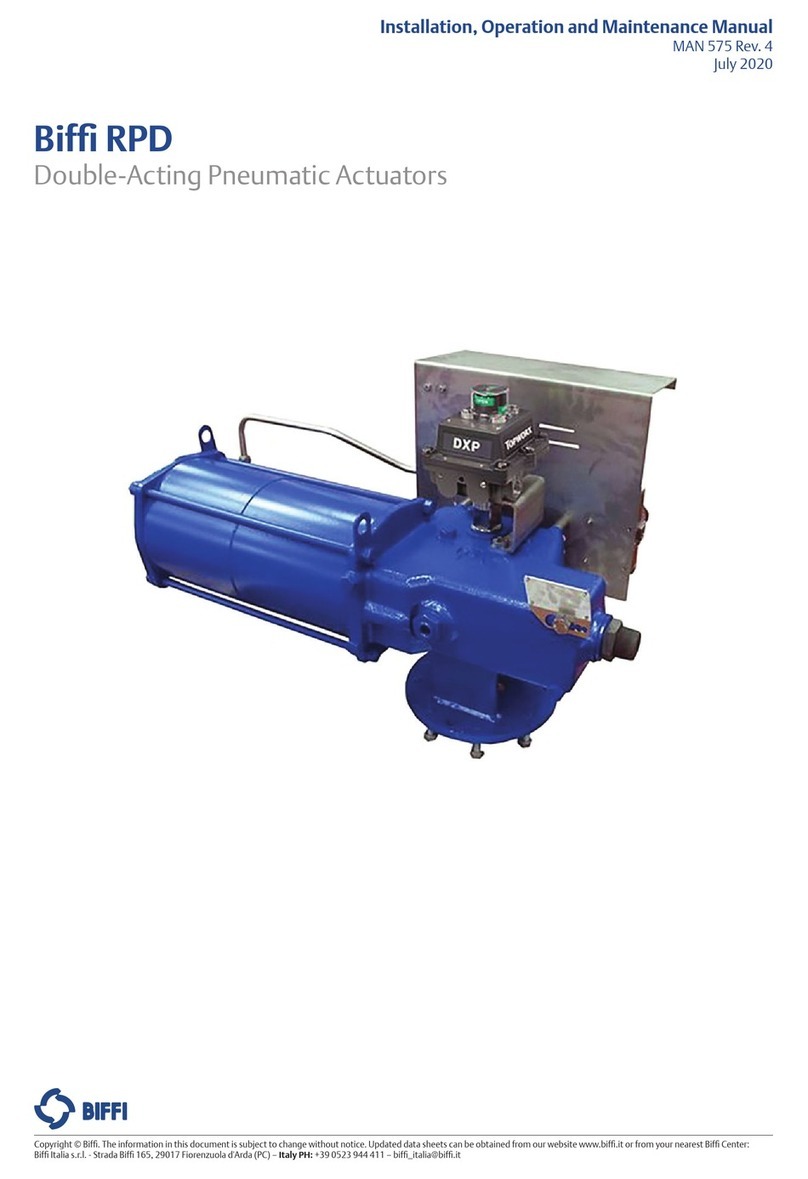
BIFFI
BIFFI RPD Series User manual
BIFFI
BIFFI ICON3000 Series User manual

BIFFI
BIFFI ALGA - EAC User manual
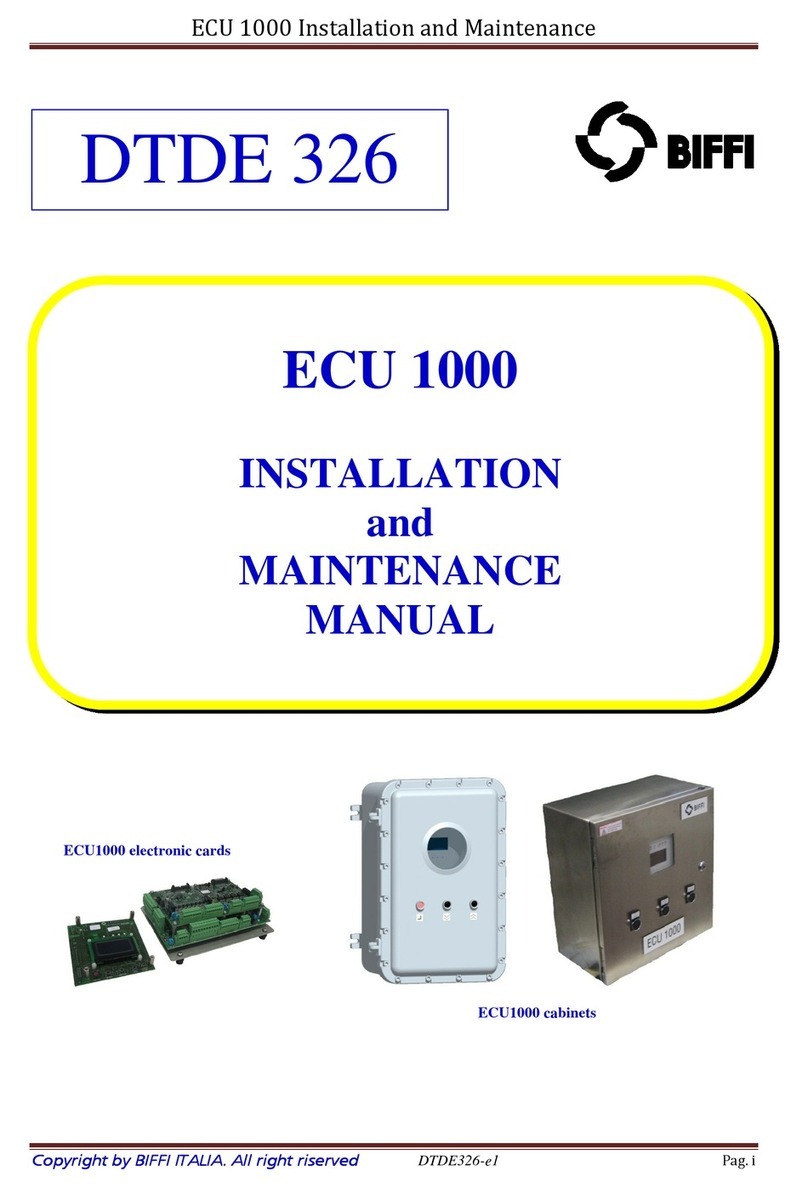
BIFFI
BIFFI ECU 1000 Manual
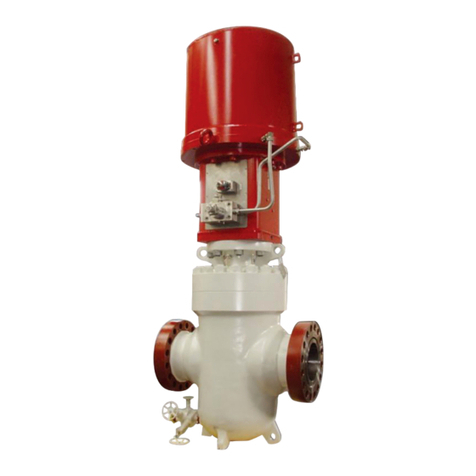
BIFFI
BIFFI HLAS-C Series User manual
BIFFI
BIFFI ICON3000 Series User manual
BIFFI
BIFFI ICON3000 Series Setup guide
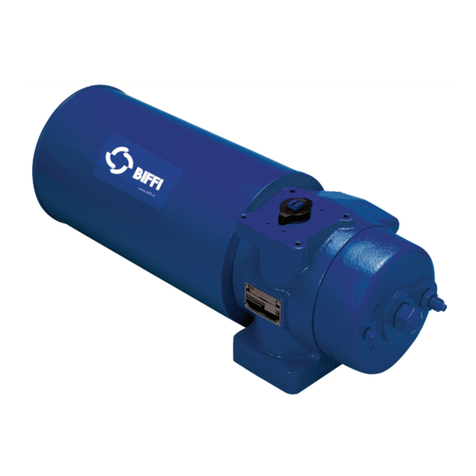
BIFFI
BIFFI FCB Series Operating instructions
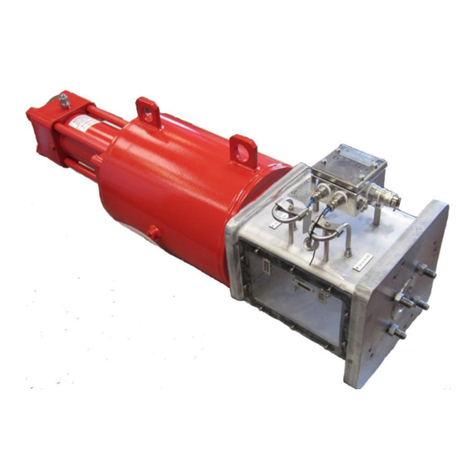
BIFFI
BIFFI HLAS User manual
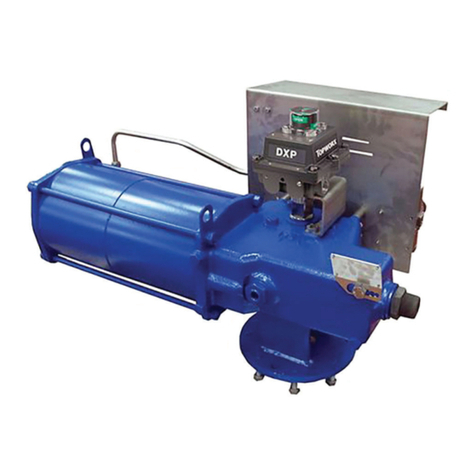
BIFFI
BIFFI RPS Series User manual

BIFFI
BIFFI ALGA-EAC Series User manual
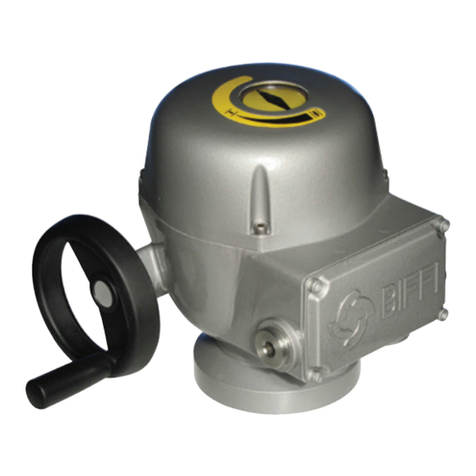
BIFFI
BIFFI F02 manual
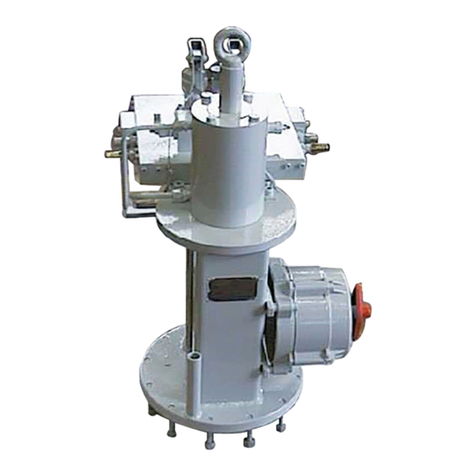
BIFFI
BIFFI HLA Series User manual
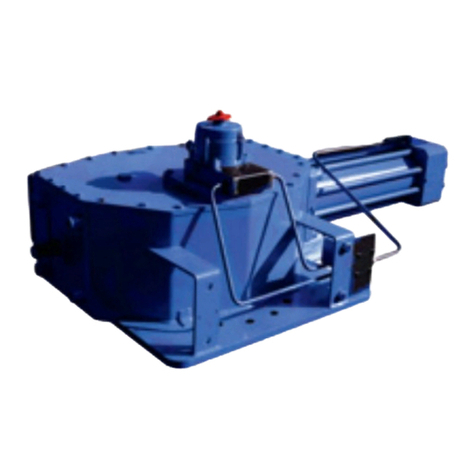
BIFFI
BIFFI OLGA-H User manual
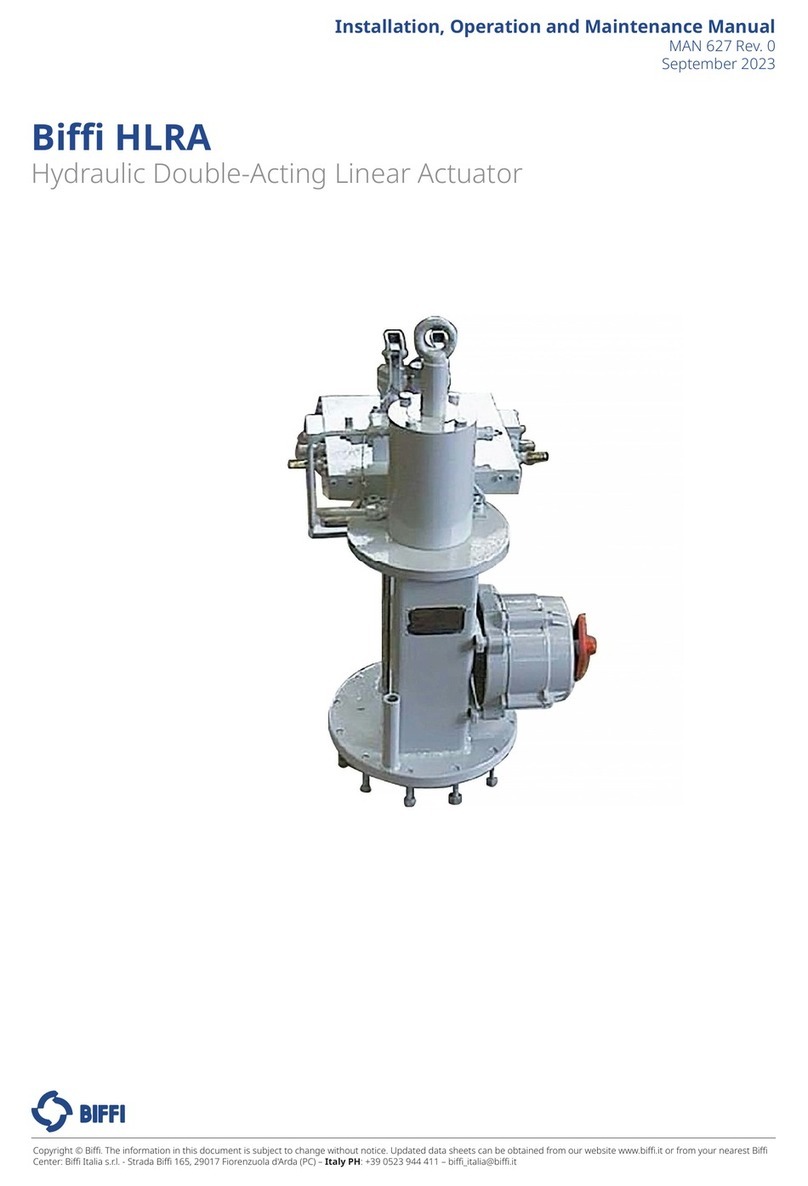
BIFFI
BIFFI HLRA User manual
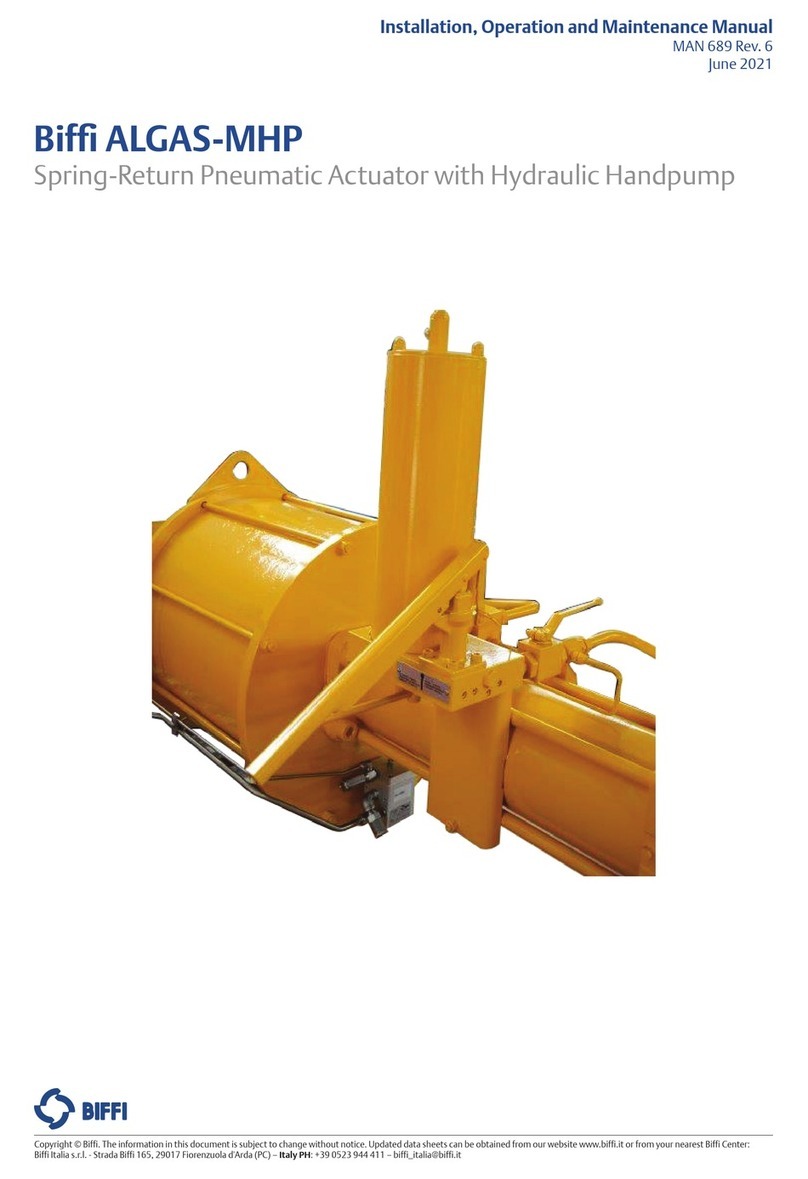
BIFFI
BIFFI ALGAS-MHP User manual

BIFFI
BIFFI FCB Series User manual
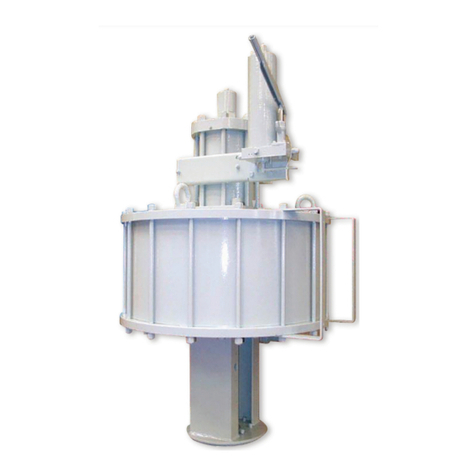
BIFFI
BIFFI PLA User manual
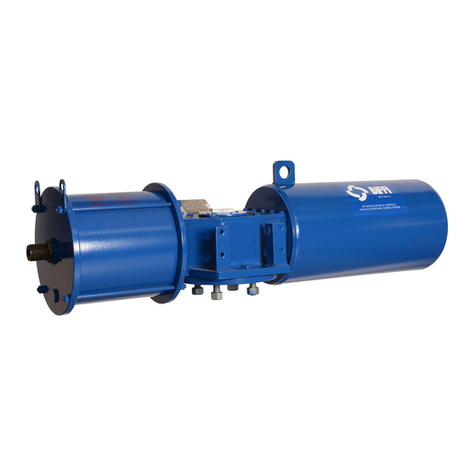
BIFFI
BIFFI ALGAS User manual
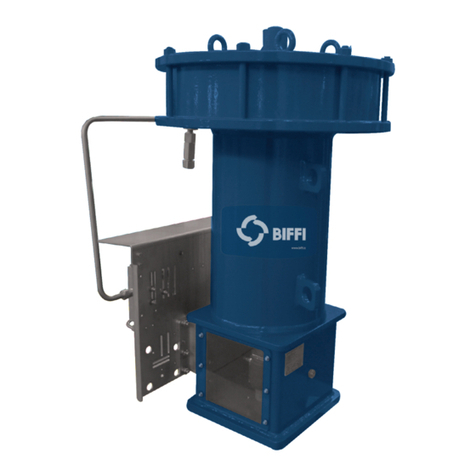
BIFFI
BIFFI PLAS Series User manual
